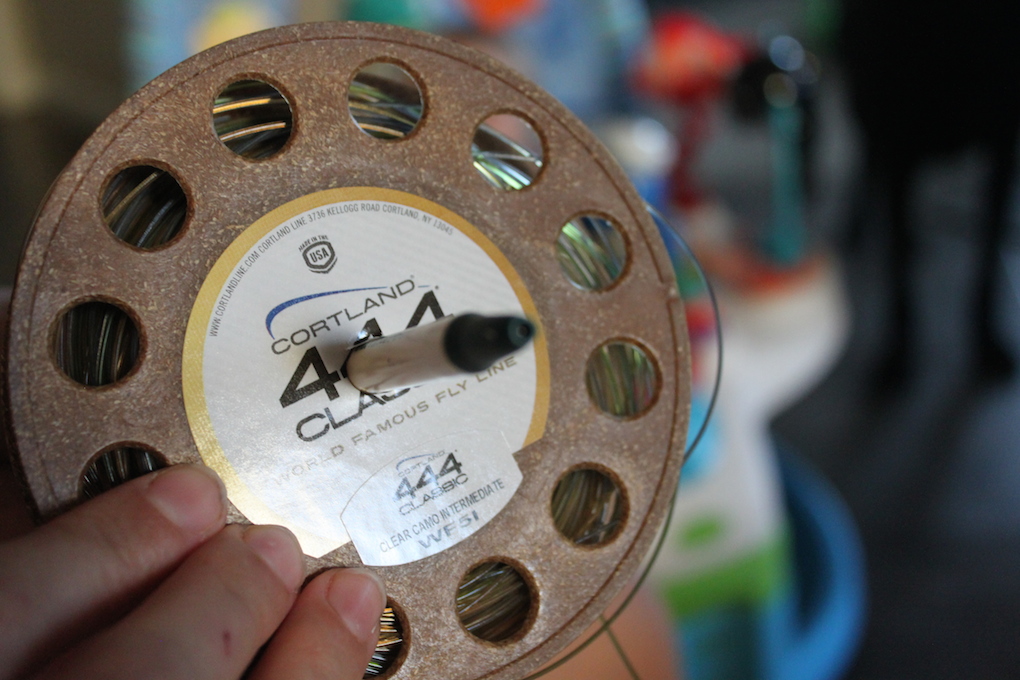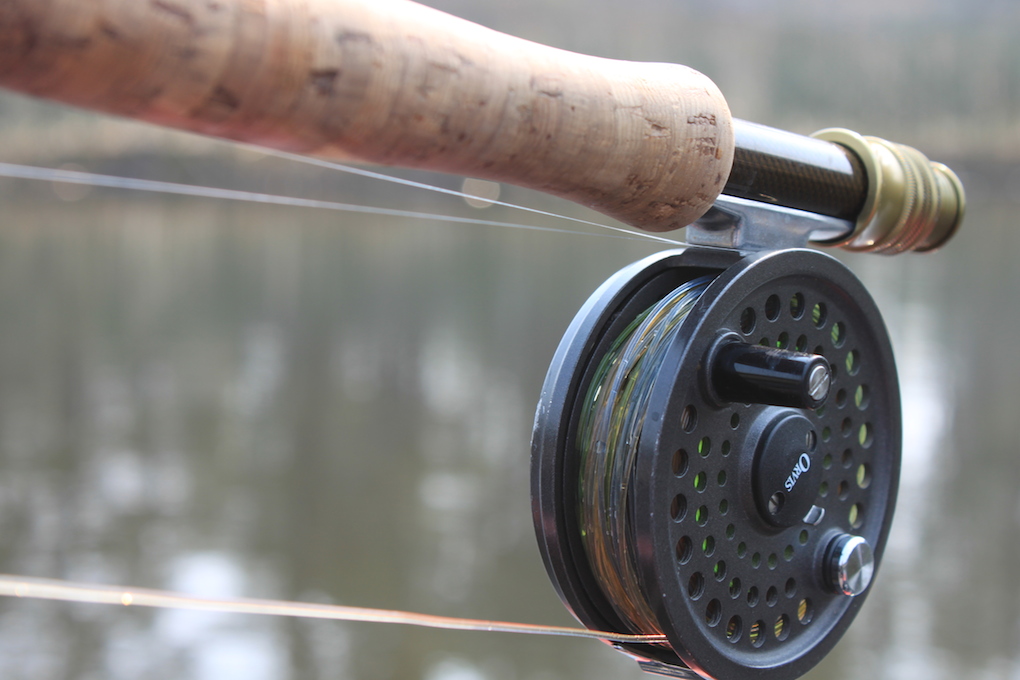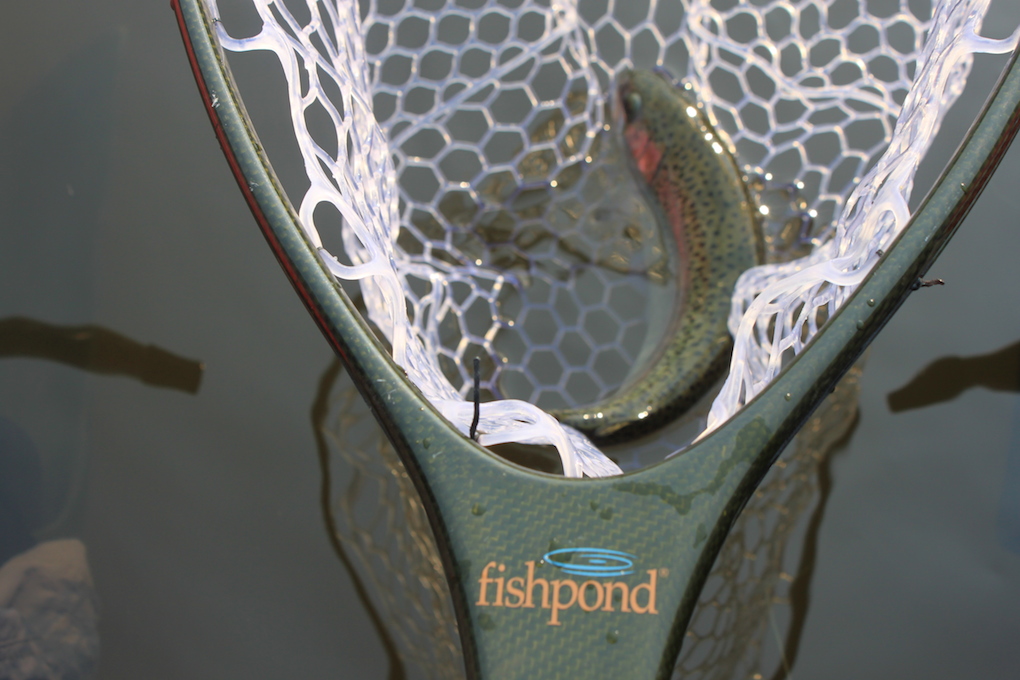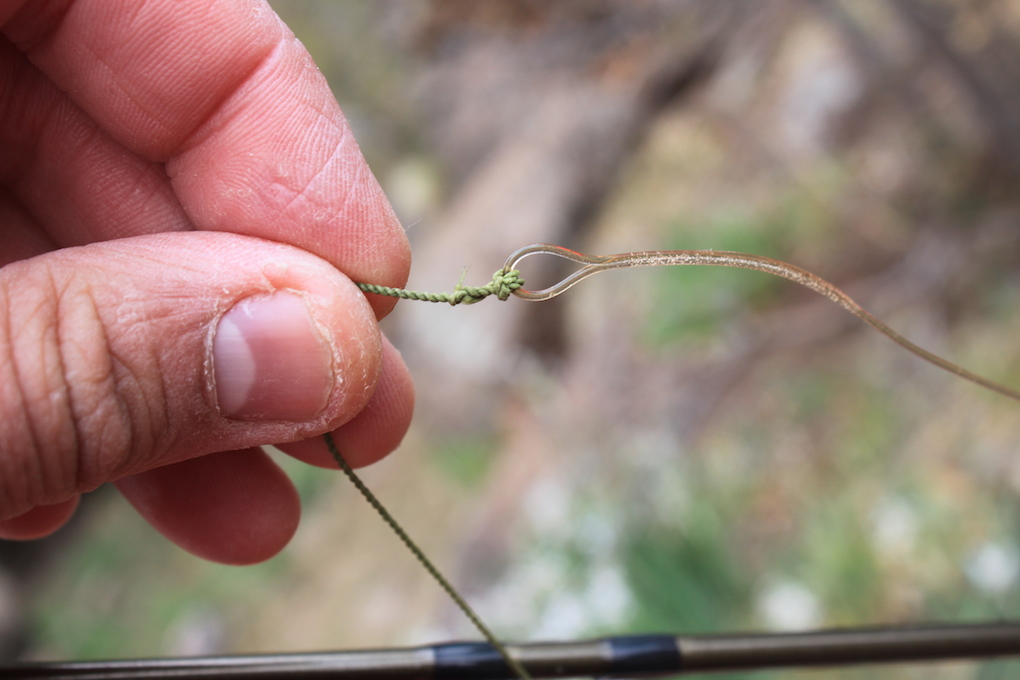Rambling Review – Cortland 444 Intermediate Clear Camo Fly Line

Why: With the recent purchase of the pontoon boat and the subsequent exploration of Arizona’s stillwaters, I found myself in need of picking up some intermediate fly line, in order to work the high country lakes in search of some trout. After a little bit of looking, I was able to get my hands on some of the Cortland 444 Intermediate Clear Camo Fly Line.

First impressions:
The facts: The Cortland 444 Intermediate Clear Camo Fly Line is a weight forward line with a 30′ head, complete with a welded loop on the head of the fly line for quick changing leaders. The core of the line is solid monofilament, which is then covered with a supple, crystal clear intermediate coating.
Sink Rate: The Cortland’s Clear Camo Fly Line is designed as the name implies to be an “intermediate” sinking line. The line is built to sink at a rate of 1.25″ to 1.75″.
The color: Having mainly fished floating line, the coloring of the clear camo fly line is pretty striking. The fly line is actually clear but is dyed in Cortland, New York to give it the “camo” coloring. In the water, the camo line virtually disappears as it sink to the desired depth.


Field Use:
This is the first summer with my new pontoon boat and I’ve been spending a good amount of time exploring the lakes here in Arizona. Most days when I get to the lake, I’ll rig up two rods. I always rig one with floating line for dry flies and one with the Cortland 444 Intermediate Clear Camo Fly Line. I’ve taken to using a short Uni-thread furled leader without any floatant. The leader tends to absorb water and sinks fairly evenly with the intermediate line.
The Cortland 444 Intermediate Clear Camo Fly Line really excels in the 1′ to 10′ range in the water column. The beauty of the intermediate line is being able to know and control where my flies are in the water column. By simply counting down as the line sinks, I can determine how deep my flies are fishing. From this point, it’s pretty simple to start at one depth and work your way deeper or shallower until you start running into fish.
I have been fishing the Cortland Clear Camo line since early spring and it truly is becoming one of my favorite fly lines. Once thing in particular that I like about using an intermediate line for stripping small streamers and leeches on a lake is that there is never a big belly or hinge in the line like you would get with a floating line. An intermediate line allows you to be in constant contact with your flies as the line sinks at a consistent rate, which I feel has helped my success rate on the water. This Cortland Intermediate line is really ideal on windy days too. Since the whole line sinks, the choppy water does not push the line around on the surface of the water, like it would with a floating line.

In recent years, I’ve become a bit religious about cleaning fly lines. Fly line is expensive and I want to make sure it lasts as long as possible. After most trips, I like to clean soak my line in mild soapy warm water and pull it through a clean cloth. I’ve heard of guys who fish Cortland intermediate line pretty hard and have had the same line for years. So far I’ve been impressed with how the line has performed, and I intend on getting years of quality use out of it.
Some things to keep in mind with all intermediate lines is that once your rod is strung up with intermediate line, it’s a bit tough to just switch over to dry fly fishing. It is a pretty good idea to bring along another rod rigged with floating line in case fish start rising. Another thing that is a fairly common complaint about intermediate line is that they retain a ton of memory. I was surprised and pleased by the minimal memory coils in my Cortland 444 Intermediate Clear Camo Fly Line.
I paired the Cortland 444 Intermediate Clear Camo Fly Line with a couple different rods and found that my TFO BVK 5 weight was the winner. The BVK has a fairly fast action and the Cortland Clear Camo loaded it quite nicely. With the little bit of extra weight in the intermediate line, I felt the line cast comfortably in the 30-50 foot range, but was perfectly adept at pushing the line farther if need be. Bottom line, it’s a fun line to cast.

Pros:
Excellent for still water fishing
Camo coloring
Cost (as far as intermediate lines go, the Cortland 444 is pretty reasonable)
Durability (so far has been great)
Smooth through the cast
Made in the USA
Cons:
The Cortland Clear Camo does have a bit of memory like all intermdiate lines do, but nothing that a bit of stretching didn’t fix.
Prognosis: I love this line for stillwater fishing. If you see me on a mountain lake here in AZ, you can bet I’ll have one rod rigged up with Cortland 444 Intermediate Clear Camo Fly Line.
* Disclaimer: The reviews at Arizona Wanderings are my honest opinion. Arizona Wanderings is not sponsored by or associated with any of the stated companies and is accepting no compensation, monetary or otherwise, in exchange for this review. The Cortland 444 Intermediate Clear Camo Fly Line was provided by Cortland for the purpose of this review. My independent status may change in the future but, as of the date of publication, no relationship other than described above has been pursued or established.

Sign up to receive email updates from Arizona Wanderings

Hi Ben, I have been fishing one of these lines for quite a few years. Sink rate, colour, castability , are all great. But its tendency to form knots in the retrieved line is an issue. It’s difficult to put a finger on it. It’s not that it has too much memory, it is more to do with the plastic/tacky finish that seems to invoke knots. This despite plenty of washing and stretching. Anyway, for now I keep on fishing it, because I believe in making my tackle last, and Cortland lines certainly do last.
Thanks for the comment Andrew, I’ve had a few knots, but nothing too crazy or out of the ordinary for me. I’m looking forward to fishing this line for many years to come.
Ben
Great write-up. The “camo” effect is interesting, I like it. Did it come on a biodegradable spool, is that what I am seeing?
Thanks Kristen. I don’t know what the story is with the spool. It’s plastic, I think. Not biodegradable.
Ben
Great review. Clear camo has always been one of my favorites.
Great to hear Landon. I’m definitely a fan of this line.
Ben
Ben,
Did you overline it by using WF6I or did you go with WF5I on your 5 wt? Thanks – Bob
I use the WF5I for my 5 weight. Take care.
Ben
I have fished my intermediate camo line for the past several years and wish I had bought an intermediate line years ago. In the past two years, I have had MUCH trouble with knots and tangles as it lays on my float tube apron, and stretching it doesn’t help. Very aggrivating!